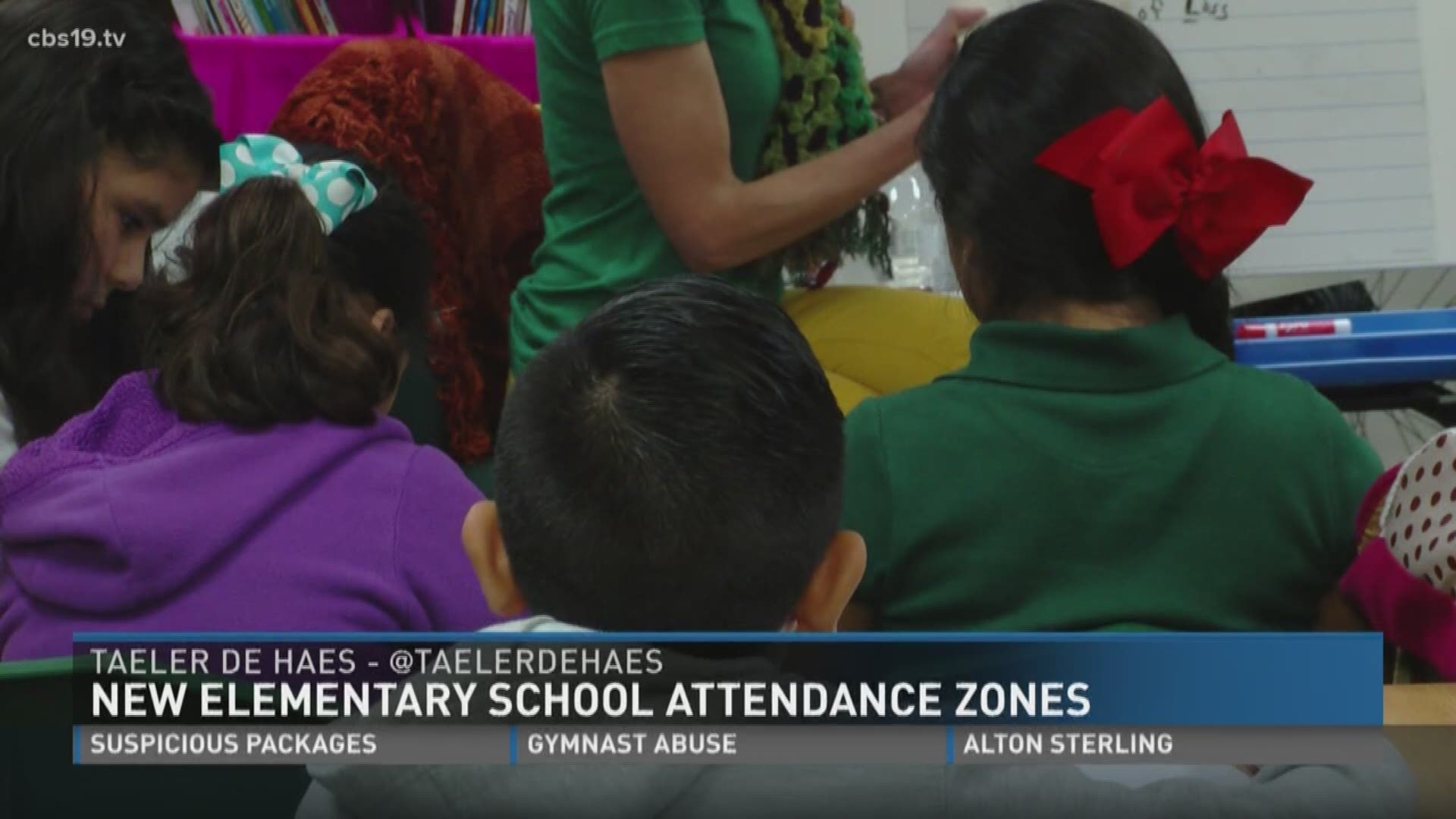Tyler Independent School District board members approved a complete overhaul of elementary school attendance zones Monday night.
The school board already has approved new middle and high school attendance zones for the 2018-19 school year, so this would be the next step.
Tyler parent Carrie Barrera said the new zones are much easier to read.
"They had circles of attendance zones, separated by other attendance zones. It didn't make sense," she said.
TISD school board president Fritz Hagar said board members and the district spent several years coming up with the new zones.
"We certainly sought to use major thorough fares as dividing lines, so that neighborhoods aren't split -- so that kids who grow up together go to the same elementary schools," Hagar said.
Five of the district's 17 elementary schools have split zones. Clarkston Elementary, located in far southeast Tyler, near The University of Texas at Tyler is the most extreme example, with three zones.
Its farthest zone is outside of Loop 323 near Interstate 20 on Farm-to-Market Road 14, with buses running past several closer elementary schools between the two locations.
Another example is Bell Elementary, located one block south of Tyler Junior College. It has an attendance zone on U.S. Highway 69 between Loop 323 and I-20.
Data Specialist John Landes has been given the task of redesigning attendance zones for every school in the district. In February, the Tyler ISD board of trustees voted to change middle and high school attendance zones.
With the redesign of middle school programming and construction beginning on renovations to both high schools, the district decided now was the time to act.
“We have kids on the bus an hour or two a day, round trip. Let’s make these zones make sense,” Landes said. “We have the opportunity and we know for sure what needs to get fixed. We need to get rid of the desegregation bubbles that don’t make sense.”
The "desegregation bubbles" he is referring to are pockets of neighborhoods where students were zoned to schools far from that neighborhood so campuses could meet the racial makeup requirements of the district's desegregation order. That order has since been lifted.
Landes said the new attendance zone boundaries will be far easier to read on a map and be more clear, compact and continuous.
Without adjusting attendance zones, the schools on the western side of the district would see population numbers continue to grow, while many other campuses would see attendance dwindle, district officials have said.
“We’ve got this mix of some schools that are losing population at a pace that needed attention and then (the number of) students at Dixie and Jack getting really, really big and not slowing down,” Landes said.
“Then you have the southeast and eastern zones, where there aren’t as many families and kids as there used to be, so they kind of need to take some pieces.”
Jack and Dixie elementary schools are nearing capacity, while Jones has only about 300 students – half of which are transfers from outside its attendance zone.
Restructuring the elementary schools also will help better align students to middle and high schools. As it is, several middle schools are split between attendance zones for the high schools. The district hopes to keep middle school students together as they move into high school.
“As best as we can, we want to create true feeders," Landes said. "We should see a 40- to 60-percent reduction for kids who weren’t going to school together for five-plus years,” Landes said.
After the realignment, students will be able to stay with classmates from sixth through 12th grades. Hogg Middle School will remain as the only middle school split between both high schools.
Several of the midtown schools will shift their attendance zones to absorb the Caldwell zone, which will no longer be an elementary school. Caldwell will begin to transition to a K-8 magnet with the addition of sixth grade in 2018-19.
In the extreme southern part of the district, Owens Elementary School will relieve some of the overpopulation at Jack by taking on the students living to the south and southwest of Toll 49.
Orr, Jones and Ramey will help alleviate crowding at Dixie. These shifts should allow Jack and Dixie to drop to about 600 students. Jack is currently near capacity with close to 800 students and Dixie is at 700 and climbing.
Superintendent Marty Crawford has said one big benefit of realignment is they can get students in empty seats while also being fiscally responsible and not asking taxpayers to build more elementary schools in the growing western side of the district.
Crawford also stressed that there is no danger of creating segregated schools in changing attendance zones. Any changes will not drastically alter any demographics as Tyler ISD has become a majority-minority district as populations shifted over the past 50 years. The district is about 72 percent minority.
The district also is looking to tighten its transfer policy, as 1 in 6 Tyler ISD students do not attend the school they are zoned to because of in-district, out-of-district and magnet transfers.
Parents can find their home attendance zone at TylerISD.org. The maps for middle schools and high schools are available already and elementary schools will be added by April 1.
The district also has extended the transfer application until April 6.

